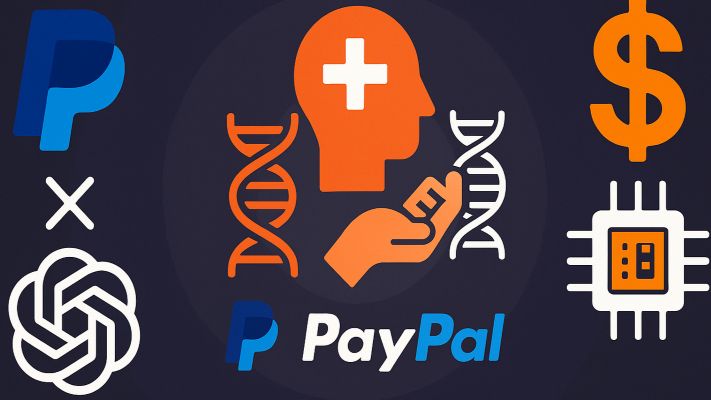AI Navigation
- articleAI Trends
- lightbulb_2AI Tips
- assistant_navigationAI Navigation
- heatHot Articles
- emergency_heat_2Hot Tips
- format_list_numberedPrompt Formatter
- psychologyTest Center(RPI)
October 29, 2025 · 24-Hour AI Briefing: PayPal joins ChatGPT, Nvidia enters healthcare, and OpenAI bets $1.4 trillion on the future
In the past 24 hours, the global AI landscape has shifted again.
From fintech integration to cross-industry expansion and trillion-dollar ambitions, the world’s biggest players are redrawing the boundaries of artificial intelligence.

1. PayPal partners with OpenAI to embed its digital wallet in ChatGPT
PayPal announced a partnership with OpenAI to integrate its digital wallet directly into ChatGPT. Starting next year, users will be able to make purchases and payments within the chat interface.
Comment:
For PayPal, this marks a transformation from a passive payment processor to an active participant in conversational commerce. It will gain access to invaluable transaction data and behavioral insights.
For OpenAI, embedding PayPal extends its monetization model beyond APIs and subscriptions, introducing transaction commissions and AI-powered shopping.
The question is — will consumers embrace a world where chatting with an AI means shopping through it?
2. Nvidia invests $1B in Nokia and partners with Eli Lilly & Johnson & Johnson to build an AI “super-factory”
Nvidia announced a $1 billion investment in Nokia, sending Nokia’s stock up more than 22%. At the same time, CEO Jensen Huang revealed at GTC that Nvidia is collaborating with Eli Lilly and Johnson & Johnson to develop a new AI supercomputer dedicated to drug discovery and pharmaceutical manufacturing optimization.
Comment:
Nvidia’s ambition now extends far beyond GPUs. Through strategic ties with telecom giant Nokia and pharmaceutical leaders Eli Lilly and J&J, the company is constructing a multi-industry AI ecosystem.
This is more than computational expansion — it’s industrial domination. As AI begins powering communications, healthcare, and manufacturing, Nvidia’s moat keeps deepening.
The real question: which sector will Nvidia conquer next — finance, education, or energy?
3. OpenAI announces a $1.4 trillion investment plan to build AI infrastructure and “autonomous researchers”
OpenAI plans to invest around $1.4 trillion in data centers and next-generation AI research systems over the coming years. The company outlined two milestones:
-
September 2026: achieve an “AI Research Intern” capable of assisting human scientists by generating and analyzing experimental results.
-
March 2028: develop a “Fully Autonomous AI Researcher” that can independently conduct large-scale scientific studies.
Comment:
These milestones represent OpenAI’s attempt to create self-evolving intelligence.
The 2026 “AI Intern” marks the leap from language model to scientific collaborator, while the 2028 “AI Researcher” could exponentially accelerate global scientific output.
However, with a $1.4 trillion investment — roughly one-third of Apple’s market cap — funding, efficiency, and ROI remain critical questions.
Is this visionary foresight or the boldest bet in AI history?
The AI race is no longer just about smarter algorithms — it’s about capital, infrastructure, and ambition.
Whoever builds the most integrated AI ecosystem may well define the next decade.
For more AI insights, business intelligence, and tech trends, visit https://iaiseek.com/en.